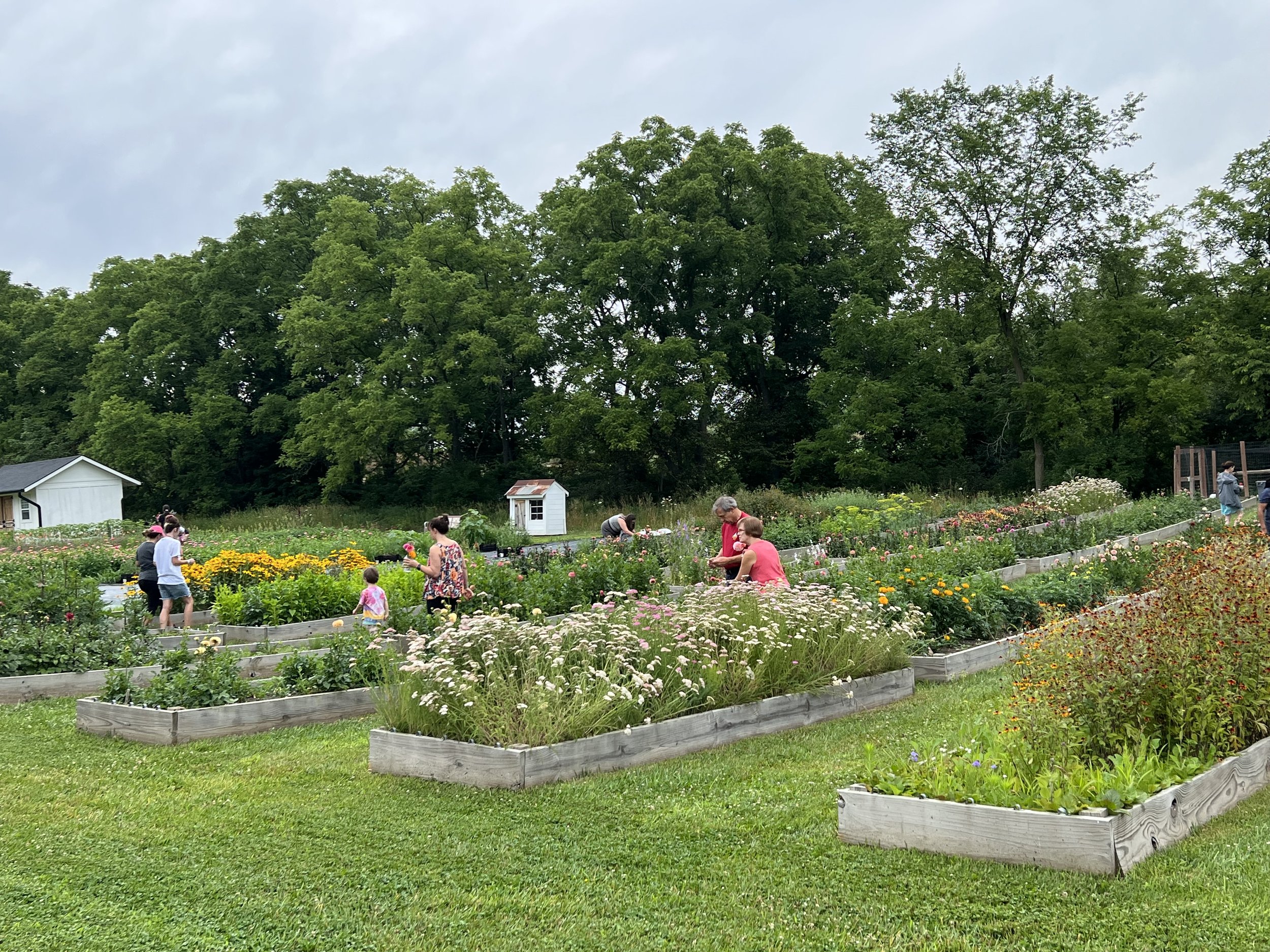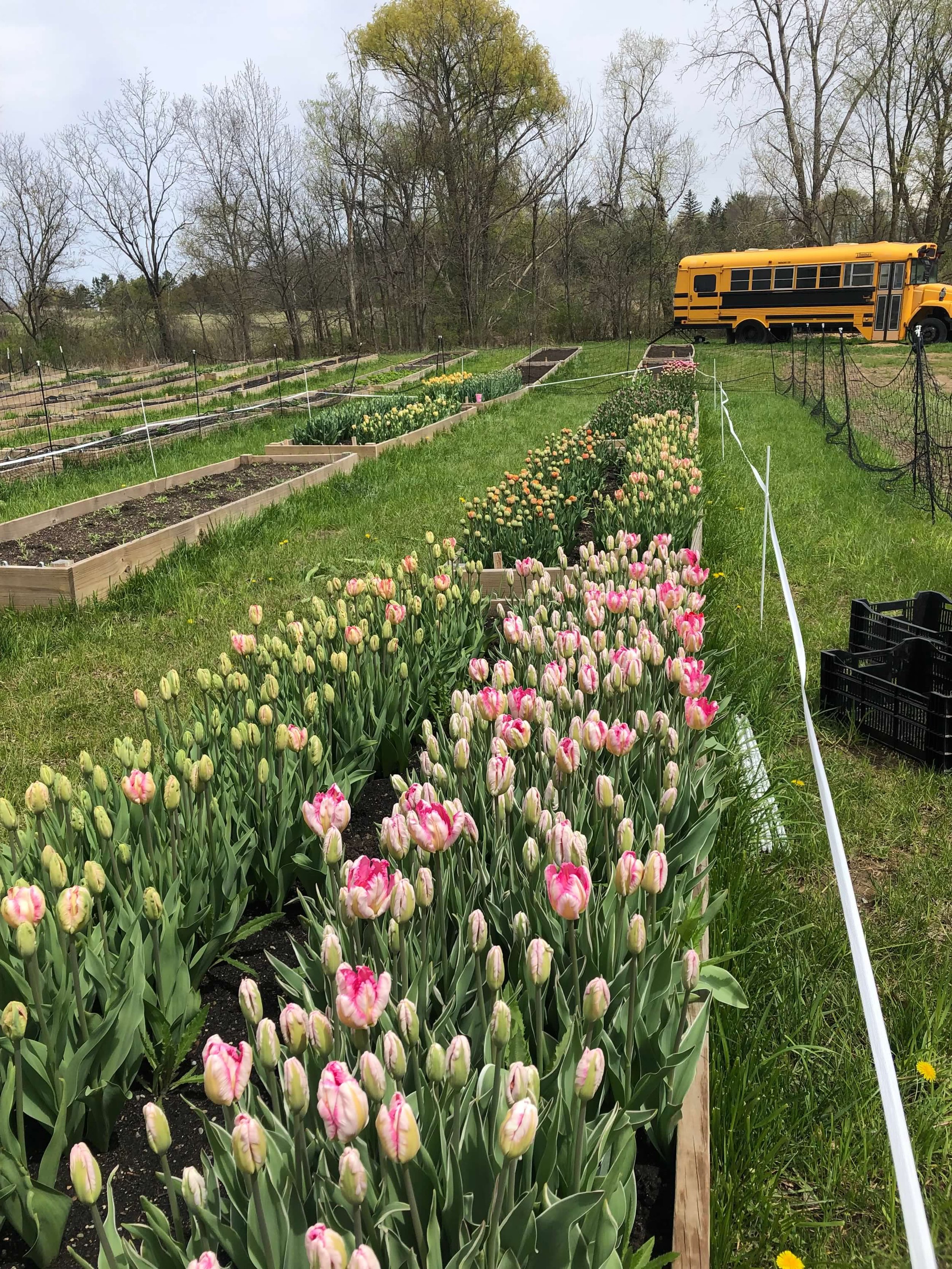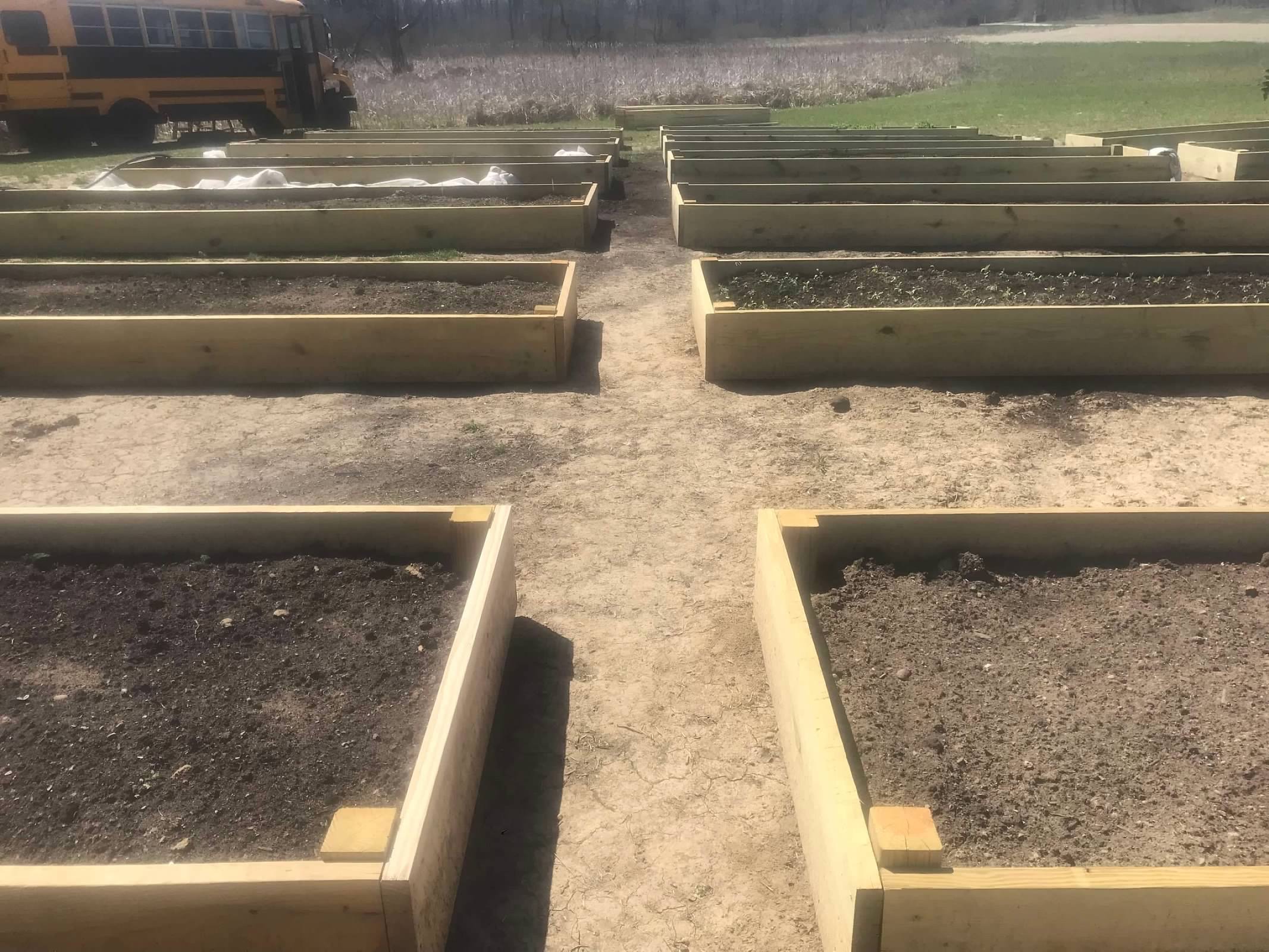Raised Garden Beds: Are They Right for Your Cut Flower Garden?
I’ll never forget the fall day when I was so excited to dig up the 80+ dahlia tubers I’d grown during my first year of flower farming. I watched all the pros do it on social media and I couldn’t wait to see how many extra tubers my originals had grown. Instead, when I dug up my first one, it weighed over 10 pounds—it took two hands to hold! There was no tuber to be seen because it was completely covered in a massive clump of clay.
I immediately decided that I was never dealing with that again. Cue the great build. In just over two seasons, I built 66 raised beds.
But does that mean raised beds are right for every flower farmer? Or every garden? Not necessarily. Choosing the right growing method is not only important to how well your flowers grow, but it can also save you time and energy.
Before you decide what’s right for you, let’s talk about the basics.
What is a raised garden bed?
A raised garden bed is a structure that holds soil above ground level. Raised beds are typically made of wood, stone, or metal and then filled with soil and compost to create a nutrient-rich space for plants to grow.
Raised garden beds versus growing directly in the ground
There are a variety of reasons and benefits you might want to consider before deciding if raised beds are right for you.
Raised garden bed pros and cons
Pros
Drainage: Because raised beds sit above the ground, they can help prevent waterlogging and root rot in your flowers.
Soil quality: You have much more control over the soil quality when you use raised beds. This was the main reason I decided to use them. My soil is mostly clay, meaning it’s very thick, poor draining, and hard to work.
Pest management: It can sometimes be easier to put barriers around your raised beds to help keep pests out.
Design/aesthetics: This is definitely dependent on the individual, but I love the way my raised beds look. The clean lines are great for my OCD and I just think how they’re arranged looks great for my u-pick clients.
Cons
Cost: The cost to build and fill raised beds can add up quickly. I’m not going to lie, it cost me a helluva lot. I originally thought the wood to build them would be the most expensive part, but it actually ended up being the soil. Each bed needed five tractor loads (half compost and half top soil).
Maintenance: You need to regularly water, fertilize, and add to raised beds. I don’t always amend my beds every year, but I do add soil to keep the dirt level where I want it. You may also need to repair or replace your beds. About 20% of my beds have bowed from the weight of the soil. It’s not the end of the world, but next time I may add a support beam in the center.
Space: Raised garden beds can take up more space than traditional in-ground gardens, depending on how they’re designed. If you have limited growing space, you should consider how much space you’d need for raised beds.
In-ground garden pros and cons
Pros
Cost: As mentioned, growing cut flowers directly in the ground is often less expensive than growing them in raised garden beds because you don’t need to buy or build the structures or the soil to fill them. You really only need soil amendments.
Natural environment: Growing flowers directly in the ground allows them to grow in a more natural environment. This is typically dependent on what you’re growing, but it can be important for native plants.
Maintenance: Because you don’t need to worry about filling the beds and structure upkeep, you can let the natural environment take care of the plants for you.
Cons
Drainage: Poor drainage in the ground can be a major problem for cut flowers if you don’t have well-draining soil. This can be especially problematic in areas that are prone to heavy rainfall or standing water.
Soil quality: When you plant directly in the ground, your flowers are subject to the quality of the soil you have. If the nutrients are lacking or the drainage is poor, your plants could suffer.
Pest management: Flowers grown directly in the ground can be more susceptible to pests and diseases than those grown in raised garden beds. Because raised beds are typically easier-to-control environments, it’s sometimes easier to put barriers around raised beds.
How to decide if raised beds are right for your garden
When deciding if raised beds are right for your flower garden or farm, be sure to consider all the variables, from cost to maintenance.
How to decide what to grow in a raised garden bed
It’s important to remember that you don’t have to exclusively choose between raised beds and in-ground gardens. You can do both – I sure do! I personally plant dahlias in the raised beds because I have to dig them out. And I’m sure not going to dig those out of clay ever again.
I put annuals in the ground because I can just pull them out every year. This helps me save on the costs and maintenance of the raised beds.
How to build a raised garden bed
So if you decide you want to incorporate raised beds at your farm or in your garden, you might be wondering how to actually build one. From the materials you use to the design you want to create, there isn’t a single right way to do it. I think what’s most important is that you go with what makes the most sense for you. Consider your budget, your climate, and your space.
I made my raised beds out of treated pine that I ordered from a local lumber yard and had it delivered.
Each bed uses two and a half boards measuring 2”x12”x16’ (my beds are 16’ long). I cut a full board equally into four 4’ pieces for the ends. I then cut 4x4” treated posts that we had leftover from our fence to 13” tall so the tops stood out which added a little jazz to the bed while providing additional support.
If building raised beds sounds like a chore, remember you can always purchase them. However, the cost will be significantly higher.
FAQs
Do I have to kill my grass before installing a raised garden bed?
You don’t need to kill your grass if you don’t want to. I didn’t kill mine. I laid down a weed barrier in three of my beds, but I haven’t noticed any difference from the beds that don’t have it. If you’re battling anything or want to calm the grass, lay down cardboard before adding soil.
How far apart should I space my raised beds?
I suggest spacing your beds at least four feet apart to allow space for yourself to walk between. However, there may be other factors that impact how wide you want your paths to be. For example, my pathways are 6 feet wide to ensure there’s space for our mower and tractor.














